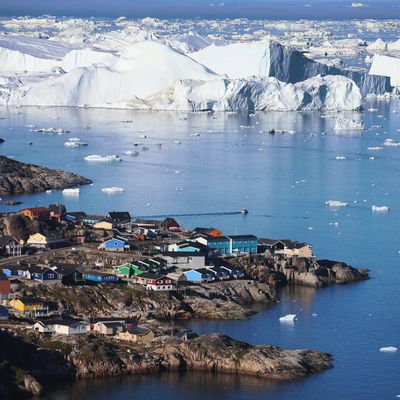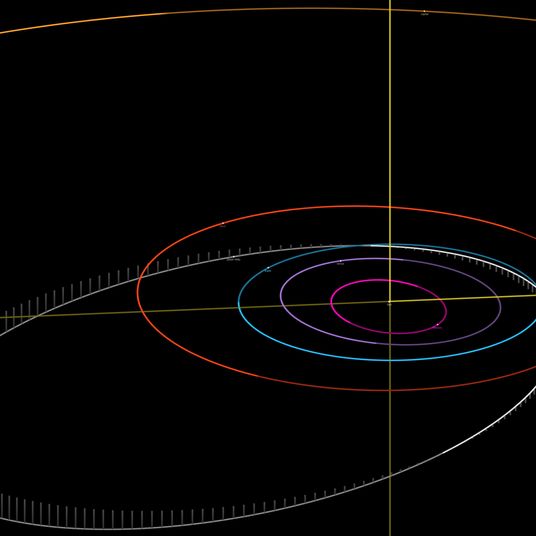
For those who sleep soundly at night by telling themselves they’ll be long gone by the time climate change matters: Environmentalist Bill McKibben points us toward glacier-watchers reporting that a gigantic one in Greenland has lost up to ten cubic kilometers in less than 30 days. Greenland, that’s far away, right? And what’s a cubic kilometer anyway?
Writes Robert Scribbler:
Think of something the size of a mountain. Now multiply that by ten and you end up with a veritable mountain range. Think of it. An entire mountain range of ice. That’s a good rough comparison to the volume of ice lost from just a single Greenland glacier over the course of a mere 26 days from May 7 to June 1 of 2014.
He also notes that the glacier, named Jakobshavn, contains “enough ice to raise global sea levels by 1.5 feet all by itself.”
In 2010, when Jakobshavn lost a seven-square kilometer section, NASA noted, “The chunk of lost ice is roughly one-eighth the size of Manhattan Island, New York.” Calving, as it’s called, looks something like this:
Except ten cubic kilometers is way more than that.





























